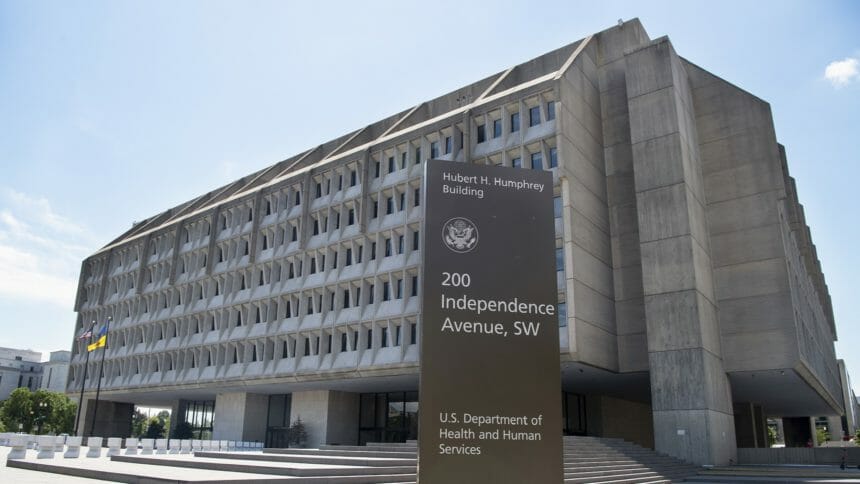
The federal government on Thursday announced $20 billion in new funding for assisted living communities and other providers on the frontlines of the coronavirus pandemic. Providers can start applying on Monday.
The phase 3 general distribution from the Department of Health and Human Services’ Provider Relief Fund covers previously ineligible providers, including assisted living operators and others that began operations in January through March as well as an extended group of behavioral health providers confronting the emergence of increased mental health and substance use issues exacerbated by the pandemic. The funding also is intended to offer the opportunity for providers that have already received funding to apply for additional funds based on financial losses and changes in operating expenses due to COVID-19.
Eligible providers can receive 2% of annual revenue from patient/resident care, plus an add-on payment that considers a provider’s change in operating revenues and expenses from that care, and payments already received through prior relief fund distributions. The application window is Oct. 5 to Nov. 6.
“HHS has worked to ensure that all American healthcare providers receive support from the Provider Relief Fund in a fast and fair way, and this new round helps ensure that we are reaching America’s essential behavioral health providers and takes into account losses and expenses relating to coronavirus,” HHS Secretary Alex Azar said. “We’ve worked with all of the resources we have across HHS to ensure that America’s heroic healthcare providers now can apply for support.”
LeadingAge said the additional funding “recognizes that some providers have been extremely hard hit by the pandemic.” The organization shared that a leading supplier estimates that personal protective equipment products — especially gloves, hand sanitizer, gowns and masks — now are four to eight times more expensive than in pre-COVID time. A study by LeadingAge Washington revealed the kinds of PPE cost increases aging services providers have had to absorb: 24% to 37% for gloves, 190% for eye protection, 285% for surgical masks and 386% for gowns.
“The additional costs borne by our members across the care continuum as a result of the pandemic is significant and will continue to grow for the foreseeable future,” Nicole Fallon, vice president of Health Policy and Integrated Services for LeadingAge, told McKnight’s Senior Living. “Help such as this is welcome and necessary to ensure the care of and well-being of older adults and staff, and we appreciate HHS’ efforts to get these relief funds to those who have the greatest needs.”
But David Schless, president of American Seniors Housing Association, said he’s concerned that given the mix of eligible providers — including hospitals, doctors, dentists, nursing homes, behavioral health and more — assisted living providers will not receive sufficient funds relative to their significant COVID-19-related additional expenses and revenue losses.
“ASHA’s research suggests the industry will face a $17 billion impact this year, and the combination of previous Provider Relief Fund allocations and this future phase 3 allocation will almost certainly not be enough,” Schless told McKnight’s Senior Living. “We continue to press members of Congress to add funds to the HHS Provider Relief Fund in future legislation, and to earmark these funds to senior living providers who have received very limited support relative to other providers.”
Argentum President and CEO James Balda noted that the “fight against this pandemic cannot be won without those providing the care and services needed to abate it.”
“We know assisted living communities in particular continue to face mounting expenses related to COVID-19, and this additional funding will offset some of those rising costs, as well as financial losses resulting from necessary operational changes,” Balda told McKnight’s Senior Living. “While this added funding won’t make these communities ‘whole,’ it will offer essential relief the industry needs to continue prioritizing the health and safety of residents and staff.”
A spokesperson for the American Health Care Association / National Center for Assisted Living said that assisted living communities and nursing homes require a “constant flow of resources” to acquire the testing, PPE and staff support needed to protect residents and staff as the virus “shows no signs of letting up.”
“We also appreciate HHS acknowledging that lost revenue due to COVID puts our long-term care facilities at further financial risk, threatening access to seniors and individuals with disabilities who require round-the-clock care,” AHCA / NCAL said. “With more than half of long-term care providers operating at a loss, this funding is an important lifeline to tens of thousands of facilities during an especially challenging time.”
AHCA / NCAL recently called for an additional $100 billion in another COVID-19 funding package to pay for testing, PPE and support for residents and staff members. LeadingAge made a similar request in a letter to House Speaker Nancy Pelosi (D-CA). Argentum requested $5 billion in funding for senior living providers to address “immediate and urgent needs” related to COVID-19 rapid testing, screening and vaccinations.
Funding for the phase 3 allocation comes from the Coronavirus Aid, Relief, and Economic Security (CARES) Act, Paycheck Protection Program and Health Care Enhancement Act, which already allocated $175 billion in relief funds to hospitals and other healthcare providers.
Funding for assisted living operators was part of phase 2 funding, with $15 billion announced in June for assisted living operators and others serving Medicaid beneficiaries. As of Sept. 11, only $2.2 billion of the $15 billion had been paid to eligible Medicaid providers, according to the Medicaid and CHIP Payment and Access Commission. Additional funds for private-pay assisted living operators were announced Sept. 1.




